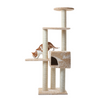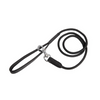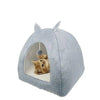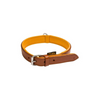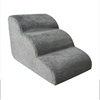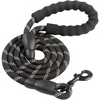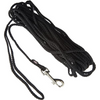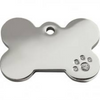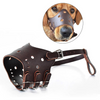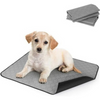Many dog owners face the challenge of teaching their pet to stay home alone without experiencing stress or anxiety. For many reasons, it is essential that your dog can stay home alone with confidence. Whether to avoid destructive behavior, for safety reasons, or simply to promote their well-being, training to be left alone is a valuable skill to teach your dog.
In this article, we'll explore the steps you can take to train a dog to stay home alone without stress.
-
Start early
Ideally, begin solitude training as soon as you adopt your dog or puppy. However, it's never too late to teach this skill. The sooner you start, the easier it will be for your dog to adapt.
-
Create a comfortable space
Before leaving your dog alone, make sure he has a comfortable, safe space where he can rest. A place with a comfortable bed, cool water, and toys can help reduce stress.
-
Practice short starts
Start with short absences and gradually move to longer ones. Leave the house for only a few minutes at first, then gradually increase the duration. This allows your dog to get used to you leaving and understand that you will always come back.
-
Use discreet goodbye signals
Avoid saying big goodbyes to your dog when you leave. Ignoring your dog for a few minutes before leaving and after you return can help normalize departures and returns.
-
Be calm and relaxed
Your dog may sense your own stress or anxiety. Stay calm and relaxed when leaving and returning. Avoid excessive emotions that could worry your dog.
-
Train basic commands
Teach your dog basic commands such as "stay" and "bed." These commands can help keep your dog calm and prevent him from getting into mischief while you are away.
-
Use desensitization
Desensitization consists of gradually exposing your dog to longer and longer absences. Start with short periods of absence, then gradually increase the time. Be sure to reward your dog every time he stays calm while away.
-
Use occupation toys
Provide your dog with occupation toys, such as chew toys or treat-dispensing toys, to distract him while you are away. This can help keep your mind occupied.
-
Play soothing music
Some people find that leaving soft music or calming background noises on can help reduce their dog's anxiety while they are away.
-
Be consistent
Consistency is key to solitude training. Be consistent in your departure and return routines, use of commands, and length of absences.
-
Consult a professional
If your dog exhibits severe or persistent separation anxiety, it may be necessary to consult a dog behaviorist or veterinary behaviorist. They can help you develop a personalized training plan to treat your dog's anxiety.
-
Avoid punishment
Never use punishment to correct your dog's behaviors related to separation anxiety. Punishment only makes the problem worse by increasing your dog's anxiety.
Training a dog to stay home alone without stress: be patient
Training to stay home alone without stress is a gradual process that requires patience and consistency. Every dog is unique, and it can take time for a dog to adjust to being alone. By following these steps and providing a comfortable, stimulating environment for your dog, you can help reduce his separation anxiety and make him more comfortable being alone.
Remember that every dog progresses at their own pace, so be patient and provide lots of love and support during the process.




